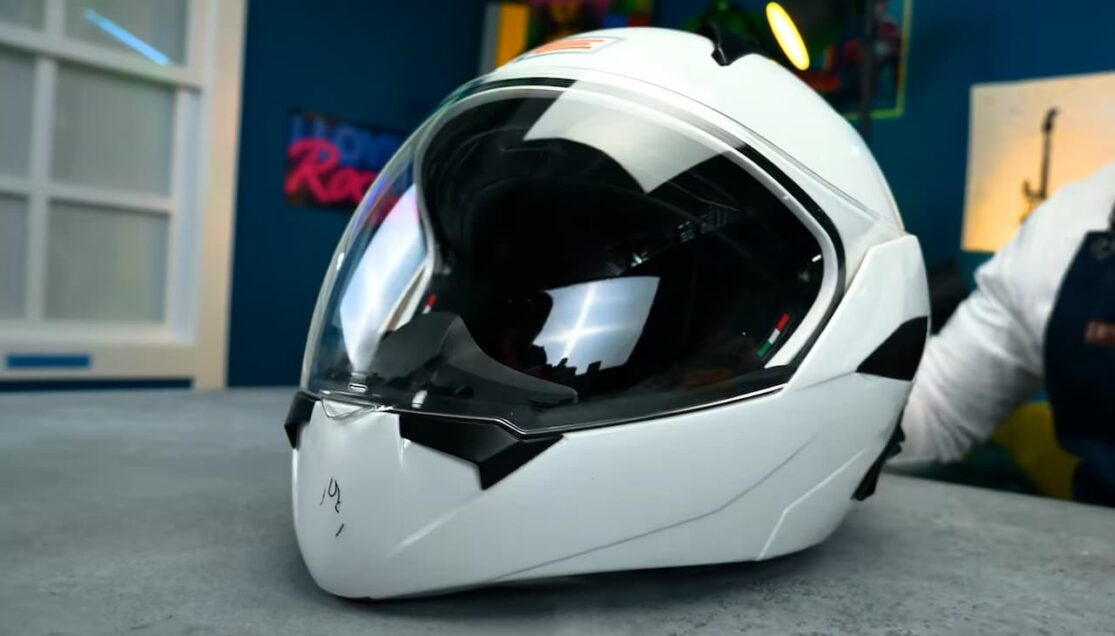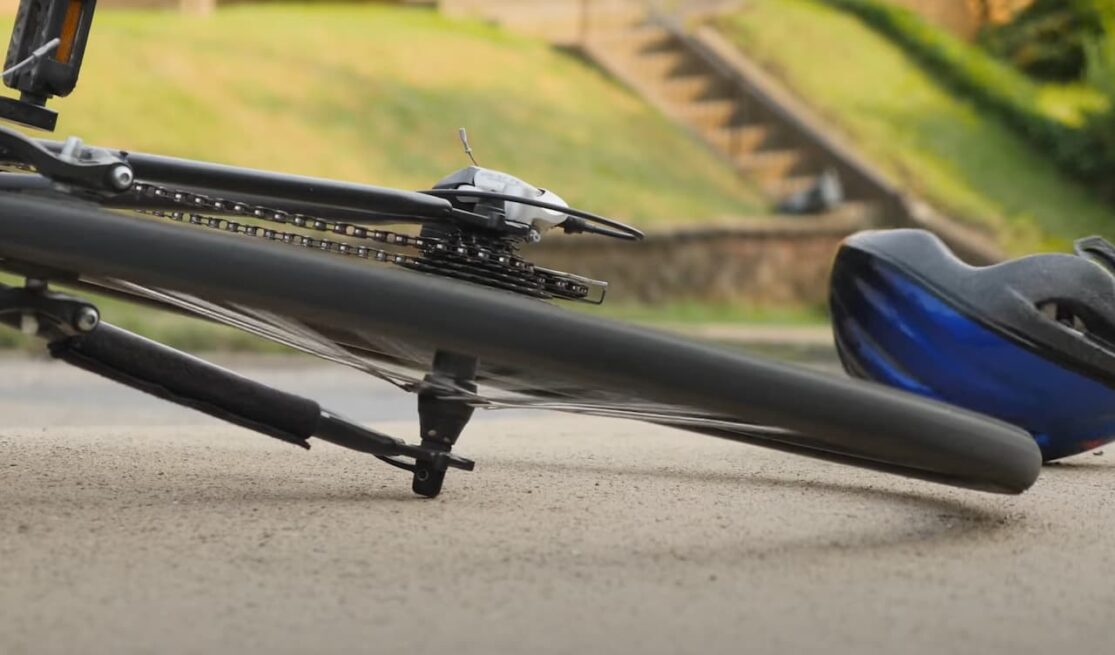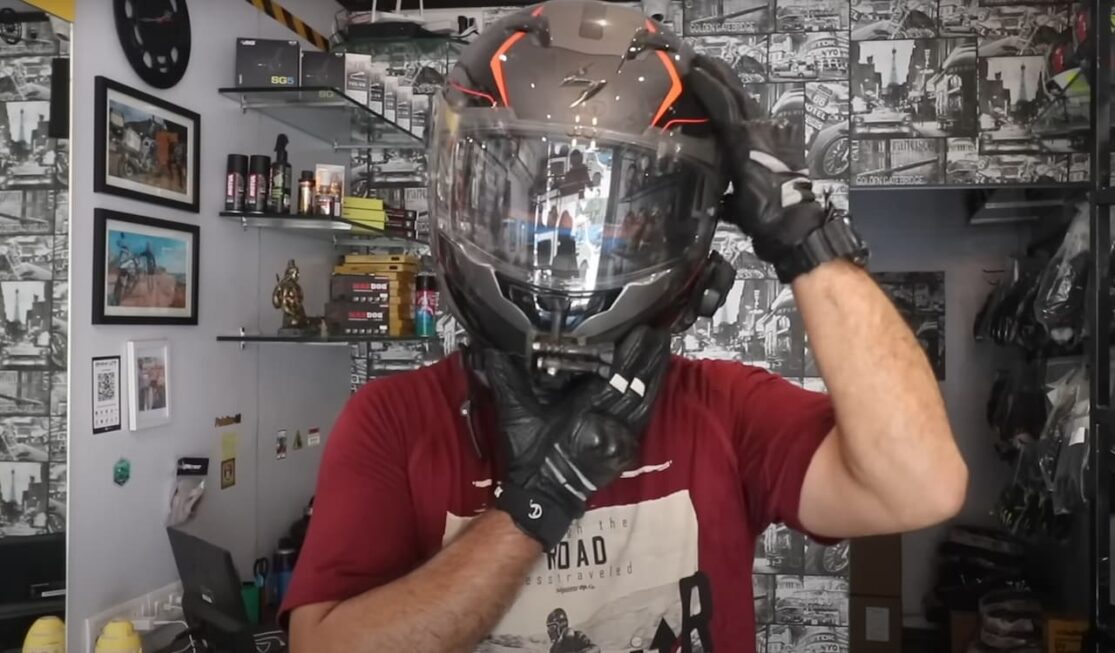Biking is a great way to get around, and it’s becoming more popular all the time. More people are choosing to bike to work or school, and as cycling becomes more mainstream, the number of cyclists on the road continues to increase.
Cycling is a healthy and eco-friendly way to get around, but it can also be dangerous if you don’t take the necessary precautions.
One of the most important safety precautions for cyclists is wearing a bike helmet.
A helmet’s protective capabilities can be reduced if it isn’t properly fitted or positioned.
A helmet’s fit is straightforward – with a few simple changes, you can be certain that you’re doing all you can to safeguard yourself.
In this blog post, we will discuss how to wear a bike helmet properly so that you can stay safe while cycling!
Why Is Wearing A Helmet Properly Important?
Helmets are meant to reduce the possibility of severe head or brain injuries in the event of a mishap.
One current meta-analysis revealed that wearing a helmet decreased the risk of receiving a head injury by 51 percent, a critical head injury by 69 percent, and a fatal head injury by 65%.
Despite these statistics, many cyclists choose not to wear helmets at all. In a study of over 13,000 riders in Australia, only 50.58% of participants reported always wearing a helmet when riding.
This number is even lower in the United States, where according to the National Highway Traffic Safety Administration (NHTSA), only 25% of cyclists wear helmets all the time.
The reasons for this are varied but often come down to personal preference or feeling that helmets are inconvenient. However, given the clear evidence that helmets reduce the severity of injuries sustained in cycling accidents, it seems like a no-brainer to make sure you’re wearing one properly every time you ride.
For unlocking these possible safety advantages, you must use a helmet correctly. A helmet can lose the protective characteristics it was intended for if it isn’t properly fitted or positioned. Fitting a helmet is simple; with a few minor changes, you can be certain that you’re doing everything to safeguard yourself.

Choosing The Right Size Helmet
The first step is to find the right-sized helmet. You can do this by measuring the circumference of your head just above your eyebrows with a tape measure, or by trying on helmets at your local bike shop. Once you have found the right size, it’s time to adjust it correctly.
The average head size is 50 to 60cm (20 – 24 inches). However, the form of a helmet may vary, so it’s a good idea to try on one before purchasing to ensure that the fit is correct.
Hold the tape horizontally across your head just above your ears and brow. The circumference of your head is determined by this measurement, which will assist you to choose the appropriate helmet size. Later on, you’ll be able to fine-tune the fit, but obtaining the correct size, to begin with, is essential.
Most helmets will have an adjustable retention system at the back, which allows you to tighten or loosen the helmet as needed. To adjust the fit, simply loosen the retention system and move the helmet forwards or backward until it is snug. Once you have found the right position, tighten the retention system so that it is secure but not too tight.
You also need to adjust the straps so that they sit comfortably under your chin and across your cheeks. The straps should be tightened so that there is no slack and so that you can just about fit two fingers between the strap and your skin.
Finally, once you have adjusted both the straps and retention system, give the helmet a little shake to ensure that it is secure on your head and will not move around when you are riding. And that’s it!
Choosing The Right Type Of Helmet
There are three main parts to a helmet: the shell, the retention system (also known as the fit system), and the padding. The shell is the hard outer layer of the helmet that protects your head from impact; the retention system keeps the helmet securely in place, and the padding provides comfort and helps to keep the helmet in place.
All helmets have a retention system, which usually consists of a nylon or polyester webbing that goes around the back of your head and tightens with a dial or ratchet. The padding in the helmet should be thick enough to compress when you push on it; if you can push the padding down to touch your head, it’s too thin.
Once you’ve got the right size helmet and adjusted the retention system and padding, it’s time to put it on. The helmet should sit level on your head (not tilted back) and low on your forehead – about two finger-widths above your eyebrows.

How To Wear A Bike Helmet Correctly?
Adjusting The Fit Of Your Bike Helmet
If your bike helmet does not fit correctly, it will not protect you as well as it should in the event of a crash. To make sure your bike helmet fits properly, follow these steps:
- Place the bike helmet on your head. It should sit level on your head and low on your forehead—about two finger-widths above your eyebrow;
- With the straps undone, open the side panels of the helmet and find the front and back of the internal foam padding. The padding should sit snugly against your head — you should feel firm pressure all around your head from the padding;
- Once you have found the front and back of the foam padding, put on the bicycle helmet. Make sure the straps are securely fastened, and that the side panels are properly closed;
- Use the sizing pads or adjusters to create a snug fit. Most bike helmets have either rear cradle adjusters or sizing pads that allow you to fine-tune the fit of your helmet;
- Once you have adjusted the bicycle helmet so that it fits snugly and level on your head, use the chinstrap to secure it in place. The chin strap should be tight enough that only two fingers can fit between the strap and your chin. You should also be able to open your mouth wide without feeling any discomfort from the bicycle helmet straps;
Setting Up The Straps
The next step is to set up the straps. You’ll want to make sure that the front strap is positioned just below your chin. The rear strap should be positioned so that it rests just above your neck, and the two side straps should come down around your ears.
Once you have all of the straps in place, you’ll want to tighten them so that the helmet is snug but not too tight. You should be able to fit a couple of fingers between the straps and your skin.
Adjusting Pad Levels
Once you have the straps adjusted, you’ll want to take a look at the pads. Most helmets will come with different levels of pads that you can add or remove to get a better fit. You’ll want to make sure that the pads are positioned so that they sit comfortably on your head without being too loose or too tight.
Finishing Tape
The helmet strap is not detachable and is instead stored within the helmet. So, other than by hand, they may only be washed in water. According to the manufacturer’s instructions (hold back of the head to keep helmet), unfasten and pass the helmet strap through the occipital bracket.
Adjust Occipital Bracket
The occipital bracket should be positioned in the lower back of the head, and it is tightened or released with a turning wheel. The helmet should not be able to be pulled off the head even when the straps are not fastened. The front strap is positioned just below your chin and the rear strap rests just above your neck. The two side straps come down around your ears.
Test Tightness
The helmet must fit snugly so that it does not come off when riding, but at the same time, it should not be too tight so as to cause headaches. To check if the helmet is too loose, try to push it forward and backward. The ideal position is one where the front of the helmet does not obscure your vision and you can still see clearly out of all sides of your peripheral vision.
Adjust The Belt
The last step is to adjust the length of the belt after debugging. The first thing you should do is open the lock flap, and then you can move and adjust the belt separately. There wasn’t a tiny lock flap on the previous helmet. It’s difficult to change the belt length before riding every time.
Adjust The Latch Position
The buckle should be slightly forward below the earlobe and the belt as near to the face as possible. It takes some time for both sides to be properly adjusted, but please believe me when I say that it’s very important because the correctly positioned tape will make you safer and more comfortable.
Adjust Chin Strap
Make sure the chinstrap is tight enough that the helmet doesn’t wobble around on your head. The strap should be tight enough that you can only fit two fingers between your chin and the strap.
Correct Belt Length
The chinstrap does not have to be overly tight, as the occipital bracket takes care of most of the helmet’s stability. With two hands, it should be simple to slide between the latch and chin with little effort. If that doesn’t work, you risk having your helmet become too tight, especially if you’re hot while riding.
Stow The End Of The Belt
Make sure the loose end of the strap is tucked inside the retaining buckle. They’ll be less likely to fly around and get dirty, and more importantly, the belt will not loosen.

How Not To Wear A Helmet
Your Helmet Is Tilted Back
Many people think that wearing a helmet is all about protecting your head from impact in the event of a fall. Moreover, while that is certainly true, there’s more to it than that. Wearing your helmet correctly also means making sure it is positioned properly on your head.
One common mistake is wearing the helmet tilted back too far. This exposes more of your forehead, and in the event of a fall, increases the likelihood of serious injury. The proper way to wear a bike helmet is with the front edge level with your eyebrows so that it provides maximum protection to your forehead.
If you’re having trouble keeping the front edge level, try adjusting the straps until you find a comfortable and secure fit. And always make sure to buckle the chin strap!
You Don’t Adjust The Rear Dial Or Strap
The rear dial and chin strap are generally adjustable. They aid in the comfort and fit of the helmet. When it comes to changing the circumference, some helmets, such as the Kask Protone, provide far more flexibility than others. Also, remember to tuck in the straps. It should not be too loose (the helmet might fall off your head during an accident) or too tight (you could suffocate).
You Wear The Helmet Back To Front
The helmet should always be worn so that it covers your forehead. Wearing it back to front is not only dangerous, but it also significantly decreases the level of protection the helmet can provide. The majority of helmets have an adjustment knob on the back, making it straightforward to figure out how they should be worn.

FAQ
Which end of a bike helmet is the front?
The highest point of the brim is where you should look for. The front of the helmet is where you’ll find it. It hugs your forehead just above your eyebrows, so the front will generally be the least-densely padded area of the helmet.
What do you wear under a bicycle helmet?
Wearing anything under your helmet in the sun is a smart precaution if you’re balding. Buffs, bandanas, and cycling caps all work well. If it’s really hot out, dampen the buff/bandana/cap with water to provide a better cooling effect as air goes over it.
A helmet isn’t doing its job if it’s not level on your head. The side straps should come just below your ears, and the Y-shaped back strap should form a “Y” between them. The front of the helmet should sit low on your forehead – level with or just above your eyebrows. You shouldn’t be able to fit more than two fingers side by side between the straps and your chin.
Will a new helmet loosen up?
Over time, a new helmet will soften and loosen up. A brand-new helmet should not be able to shift around unless you shake your head, and even then, a properly fitting helmet will never slide down your forehead and cover your eyes.
How to wear a bike helmet with long hair?
If you have long hair, you may be wondering how to wear a bike helmet without ruining your hairstyle.
Here are a few tips:
- Tie your hair back in a low ponytail or bun before putting on your helmet;
- Put the helmet on, and then adjust the straps so that it is snug but not too tight;
- Once the straps are adjusted, tuck any loose ends of the hair into the back of the helmet;
- If you have bangs, you can either push them back with a headband or clip them under the front of the helmet;